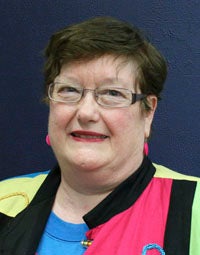Don’t lower standards to attract teachers to Minn.
Published 9:25 am Tuesday, May 26, 2015
My Point of View by Joan Anderson
As a child I liked asking questions, often while in the car with my family. I felt comfortable knowing Dad would always try to answer them. He encouraged my curiosity.
I wanted to be a teacher so I naturally played at it. I gathered up the closest children I could find and formed a club that involved learning. I enjoyed planning many fun activities for them. My neighborhood students found flowers on nature walks along a dirt road with farms on both sides. The forest in our backyard was a natural laboratory for experiments like tapping maple tree sap.
Soon I felt the children were ready for a lesson in dissection. I was 10 years old and had never experienced this before but I had heard about it and thought we should learn about the inside of the frog. I found a huge leopard frog in the woods in back of my house. I figured the way to preserve it would be to put it in alcohol. As soon as they saw what I had prepared for them, the children ran home and I was reprimanded. Guess the time wasn’t quite right for the lesson.
My school district was growing so quickly that I was the first class to complete three years in a new high school with state-of-the-art science classrooms. Since Sputnik had been launched, funding for science was generous. In 10th-grade biology, I picked a project about how fast milk soured in different temperatures. Oh boy, what a disgusting odor that was!
At Augsburg College, technology made my biology class so easy. My professor used a projector! I loved my genetics experiments, raising fruit flies over several generations and seeing sex-linked white eyes in the progeny. I decided then that I should major in biology education.
At the University of Minnesota, I had a wonderful professor whom I studied under for my master’s degree in botany. For my thesis, I collected the seeds of an aquatic plant in a culvert by Itasca State Park. I grew them in sterile conditions in order to experiment on the effect of light on seed germination.
I spent two summers at Lake Itasca Biological Station taking many of the classes. On a memorable field trip, I was the last of 15 students on a bog walk for an aquatic plants course. I fell through the layers of sphagnum moss with my clipboard. Luckily I was pulled out quickly.
I taught for a botany professor on sabbatical and my classes were invited to help plant an arboretum. It is a beautiful site at Gustavus Adolphus College to walk through. When my own children were small, we camped out at White Fox Campgrounds in August, slept outside and watched meteor showers. What a memory!
Nature has much to teach us, and many students have had few chances to see our beautiful parks. Thus, I have taken many students on field trips to the esker (a long ridge of sand deposited by a retreating glacier) at Myre-Big Island State Park. Once, we walked to Bancroft Bay Park and discovered every color of mushroom on the trail around the peninsula.
I have been blessed with wonderful schools, teachers, professors, parents and a chance to teach here in Albert Lea for over four decades. I am dedicated to keeping the integrity of our education system. The task of a teacher is not for the faint-hearted. It takes courage, a love of learning, many hours of correcting and planning, kindness, perseverance, hope and joy to do the job.
For a young teacher starting out, it is unbelievably difficult. The pay is low compared to other positions one could get with a college degree, and many are discouraged from becoming a teacher knowing the job is a challenging one.
Overall, high school teachers earn 72 percent of what an average college-educated worker in the U.S. makes. According to the Center for American Progress, limited opportunity for salary growth is a reason why many experienced teachers leave the field.
The president of Stanford University, John Hennessy, has argued for increasing the selectiveness of teaching programs and increasing both base and mid-career teaching salaries in order to draw more teachers from the top third of classes.
What our state Legislature has recently passed — allowing people with teaching licenses from other states to acquire a Minnesota license even if they have not taken classes in how to teach in their subject area — is a step in the wrong direction. It would undermine Minnesota’s rigorous teacher training requirements.
We want the best teachers for our kids, and we face a teacher shortage as many like me near retirement or leave the profession for other reasons. The way to attract high quality new ones is not to lower the licensure standards in our state. A better solution is to further enhance teaching program standards and increase compensation, which will improve the status of teachers and attract more of the best candidates.
Joan Anderson is a science teacher at Albert Lea High School.


